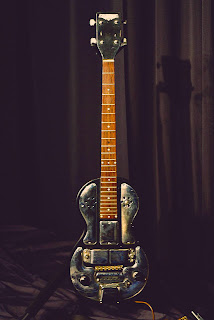 July 18, 2013
July 18, 2013 Guitar Effects Pedals - Part One - Introduction and the Evolution of the Effects Pedal
Phosphene Productions -
Introduction and Evolution of the Effects Pedal -
In this blog my intention is to shed a light on guitar effects pedals. I have broken this blog into three sections which will break down the evolution of the effects pedal into modern-day music: The creation of the pedals and their early implications; the effects themselves and how they work; and finally some tone tricks and how to maximize your tone with effects pedals.
Please also understand that I am neither an electronics engineer nor a historian and that this article is based partially on fact and partially on opinion. I hope you will enjoy it either way.
Lets start from the beginning:
It’s certainly difficult to imagine the culture around musicians and guitarists in the 1930s. These were the years of Jazz and Big Band, Swing, and Pop. The guitar player certainly wasn’t up front and center stage with fog and laser lights beaming around them. It wasn’t until the 1930s and 1940s, when the guitar moved the banjo off-stage to become a regular member of the big band, that these musicians started to form a style and gain fans of their own.For years the guitarist would sit off towards the side of the stage, strumming away, wondering if anyone noticed or could hear them. And with guitar solos leaving something to be desired with their dry, strait tone it’s not surprising to see why. Guitarists dreamed of a way they could ‘jazz up’ their guitar sound, being inspired by the loud sax and trumpet solos of the time. Guitarists wanted a way to compete for the spotlight and take over the horns’ solo spot.
It wasn’t until the advent of guitar pedals and effects units that the guitar player would start arousing interest and making the inevitable shift. Along with the birth of Rock & Roll, this created what music is today - and more importantly, how the guitar sounds today.
Rickenbacker Tremolo Guitar (Front) Early thinking concluded that if an amplified guitar was going to sound like anything other than the block of wood it is made of, some tangible, physical force was going to have to be imposed upon it.
Rickenbacker Tremolo Guitar (Back) One of the first thoughts I’m sure was “can we strap something to the body of the guitar?”, and that’s pretty much what they tried. Early implications of effects started with trial systems consisting of levers and pulleys, until they finally matured into circuits and transistors.
Probably the first sign of guitar based effects is in the early 1930s when Rickenbacker released a guitar constructed with a system of motorized pulleys in the instrument’s body. These pulleys were intended to rhythmically jiggle the guitar’s bridge to create an automated vibrato effect. Though this was a very interesting invention, it was soon phased out by the Bigsby Tailpiece in the 1940s. And though the Bigsby achieved a similar result much more easily, guitarists were made to adapt their playing style, often thought to be a downside to pick hand technique… (continue reading)
 Technology | tagged
Technology | tagged  boost,
boost,  chorus,
chorus,  compression,
compression,  delay,
delay,  distortion,
distortion,  echo,
echo,  effects,
effects,  envelope,
envelope,  filter,
filter,  flanger,
flanger,  fuzz,
fuzz,  guitar
guitar 








Reader Comments